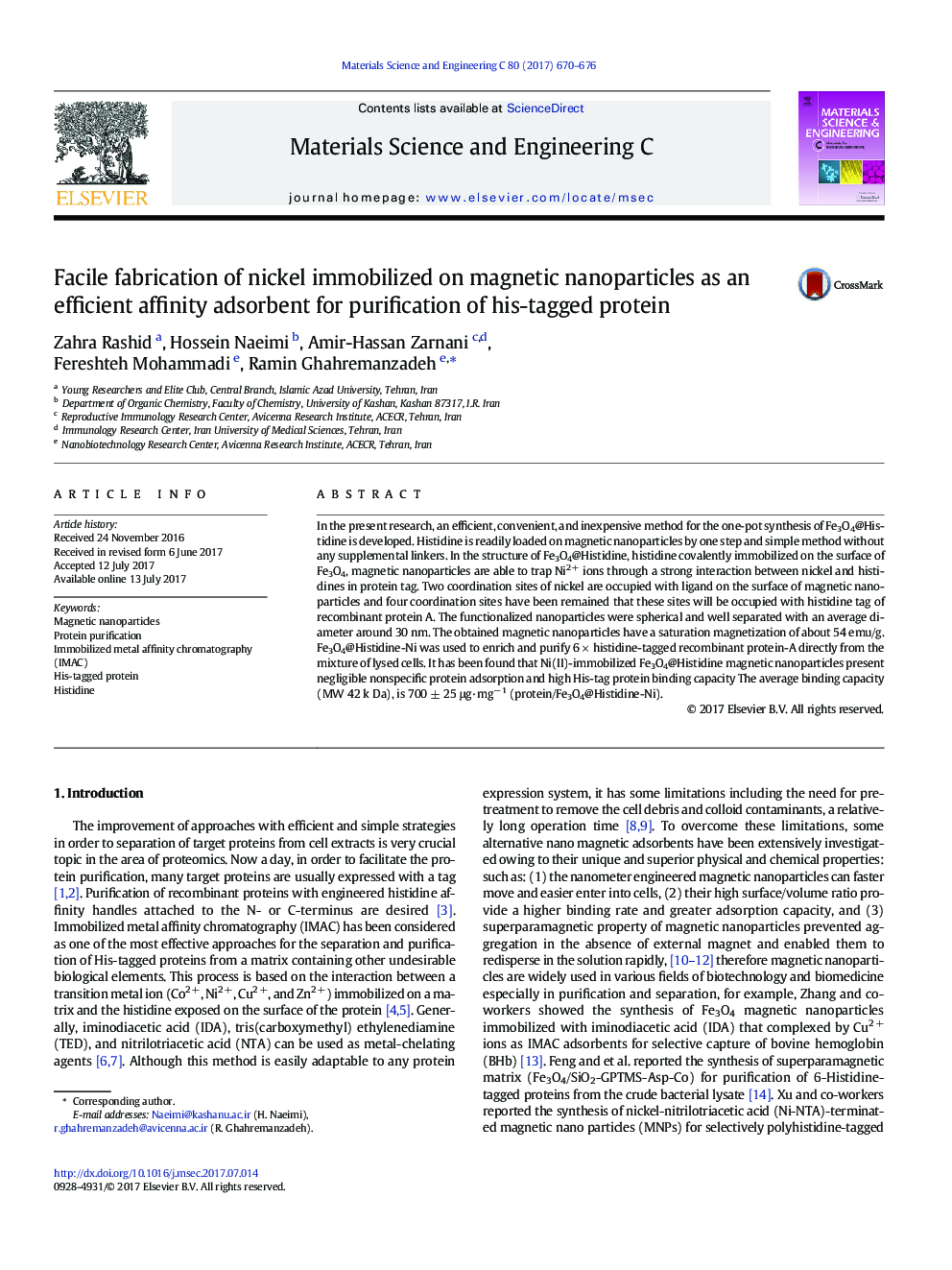| کد مقاله | کد نشریه | سال انتشار | مقاله انگلیسی | نسخه تمام متن |
|---|---|---|---|---|
| 5434364 | 1509141 | 2017 | 7 صفحه PDF | دانلود رایگان |
- Efficient, convenient, and inexpensive method for the one-pot synthesis of Fe3O4@Histidine is developed.
- Fe3O4@Histidine Ni nanoparticles was used as an adsorbent for affinity chromatography.
- Selective capture of His-tagged proteins from a protein mixture cell lysates could be achieved by prepared nanoparticles.
- Ni(II)-immobilized Fe3O4@Histidine magnetic nanoparticles present negligible nonspecific protein adsorption.
- High His-tag protein binding capacity (700 μg·mgâ 1) is observed.
In the present research, an efficient, convenient, and inexpensive method for the one-pot synthesis of Fe3O4@Histidine is developed. Histidine is readily loaded on magnetic nanoparticles by one step and simple method without any supplemental linkers. In the structure of Fe3O4@Histidine, histidine covalently immobilized on the surface of Fe3O4, magnetic nanoparticles are able to trap Ni2 + ions through a strong interaction between nickel and histidines in protein tag. Two coordination sites of nickel are occupied with ligand on the surface of magnetic nanoparticles and four coordination sites have been remained that these sites will be occupied with histidine tag of recombinant protein A. The functionalized nanoparticles were spherical and well separated with an average diameter around 30 nm. The obtained magnetic nanoparticles have a saturation magnetization of about 54 emu/g. Fe3O4@Histidine-Ni was used to enrich and purify 6 Ã histidine-tagged recombinant protein-A directly from the mixture of lysed cells. It has been found that Ni(II)-immobilized Fe3O4@Histidine magnetic nanoparticles present negligible nonspecific protein adsorption and high His-tag protein binding capacity The average binding capacity (MW 42 k Da), is 700 ± 25 μg·mgâ 1 (protein/Fe3O4@Histidine-Ni).
Journal: Materials Science and Engineering: C - Volume 80, 1 November 2017, Pages 670-676
